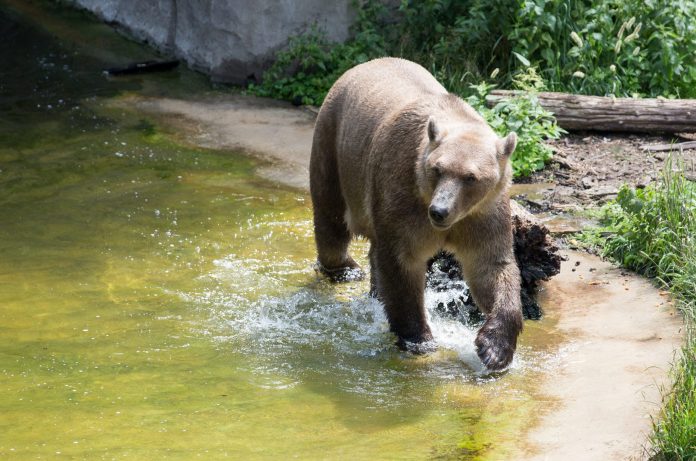Polar bears and grizzly bears are the most closely related living bear species, but grizzly-polar bear hybrids are not common. This is because two apex predator species do not typically occupy the same territory. Polar bears inhabit the tundra between the Arctic Circle and the North Pole, while grizzly bears are typically found in forests, meadows, and prairies. According to a study in the Journal of Mammology, “polar bear–grizzly bear interactions or individual recognition are likely quite rare,” except in some isolated areas.
That may be changing. According to BBC News, grizzly bears are pushing north due to climate change. Researchers say this could lead to increased occurrences of grizzly-polar bear hybrids. Hybridization is a rare phenomenon that occurs when members of distinct species successfully interbreed. In 2010, Field & Stream reported on an Inuit hunter who shot the only second-generation polar-grizzly hybrid ever confirmed in the wild. If warming climate trends continue, this might become a more common occurrence.
“Usually hybrids aren’t better suited to their environments than their parents, but there is a possibility that these hybrids might be able to forage for a broader range of food sources,” paleontologist Larisa DeSantis told Live Science. She added that polar bears have adapted primarily to hunt seals, while the skull shape of grizzlies could help hybrid offspring forage a greater range of food. “Grizzlies can eat whatever they want,” she said. “We don’t know yet, but perhaps the intermediate skull of the ‘pizzly’—or polar-grizzly hybrid— could confer a biomechanical advantage.”
A recent study in the journal Evolution offers further insights into the little-understood phenomenon of grizzly-polar hybridization. Researchers from the University of Buffalo found that ancient genomes show evidence of polar bear-grizzly bear hybridization in a 115,000 to 130,000-year-old polar bear. The researchers say that the historical transfer of genes occurred into both grizzlies and polar bears, though polar bears are considered to have been “recipients of external genetic variation prior to their extensive population decline.”
The researchers say this news could prove significant for the survival of grizzly bears, whose numbers have been threatened by diminishing sea ice. “The polar bear has become a symbolic species for ascertaining the impact of climate change on biodiversity and species evolution. With their dependence on sea ice, polar bears owe their continuing survival to the future stability of the vast Arctic regions of the planet,” write the study’s authors. “Because hybridization may catalyze adaptive evolutionary change, its potential role among the responses to global climate change should not be underestimated.”
Read Next: Population Explosion of Canadian “Super Pigs” Could Spread Into the Northern U.S.
“We know [grizzlies and polar bears] are still able to mate today and can produce fertile offspring so they may have been mating off and on since their species split, whenever the two species came into contact,” Charlotte Lindqvist, an author of the study, told Newsweek. “Although there is evidence for brown bear–polar bear hybrids in recent years in the Canadian Arctic, contemporary hybridization seems sparse, possibly caused by uncommon and atypical mating preferences of select individuals…Species evolve all the time and there is nothing to say that new species of bears won’t appear in the future, but it will likely not be in our lifetime. What may be more likely to happen, unfortunately, is the demise of the polar bear if it continues to lose its main habitat, the Arctic sea ice.”








